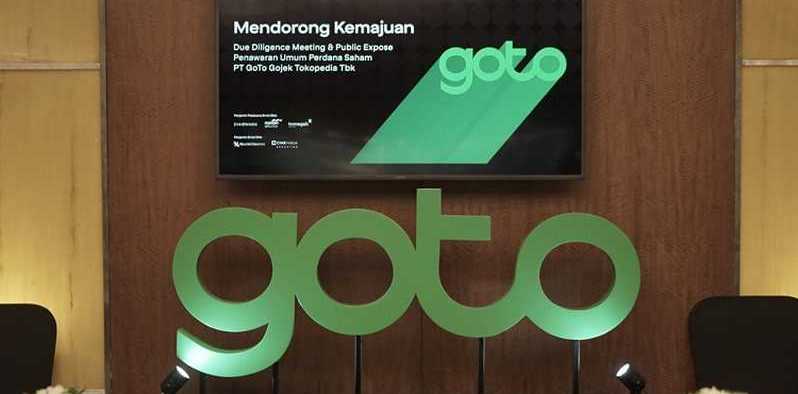GoTo Targets 15.2 Trillion Rupiah from IPO, Used to Strengthen Hyperlocal Ecosystem
Share

PT GoTo Gojek Tokopedia Tbk (GoTo) officially announced its initial public offering (IPO) on the Indonesia Stock Exchange (IDX). In their public presentation, Gojek and Tokopedia are aiming for fresh funds of $1.1 billion or the equivalent of 15.2 trillion Rupiah.

GoTo will sell 48 billion shares with a maximum of 52 billion Series A shares, equivalent to 4.35% of the issued and paid-up capital. The price set is in the price range of IDR316-Rp346 per share.
With this price-fixing, his party estimates it can reach a market capitalization of between IDR 376.6 trillion-IDR 413.7 trillion, and has the potential to become one of the IPOs with the largest value in Indonesia.
In addition, this pricing is considered to reflect GoTo’s business strength, fundamentals, and prospects in the future. The initial offering period is open from 15-21 March 2022 and the public offering period is 29-31 March 2022.
Meanwhile, the effective listing date is March 25, 2022. Meanwhile, GoTo appointed underwriters for the issuance of securities, including PT Indo Premier Sekuritas, PT Mandiri Sekuritas, and PT Trimegah Sekuritas Indonesia Tbk.

Ride-Hailing, E-Commerce And Fintech
In his public presentation, GoTo Co-founder and CEO Andre Soelistyo said he would use GoTo’s IPO funds to build the right infrastructure and resources to execute hyperlocal strategies through its three subsidiaries, namely Gojek (ride-hailing), Tokopedia (e-commerce), and GoTo Financial (fintech).
With this strategy, GoTo seeks to accelerate the growth of new users, user engagement, and penetration of newly launched products.
Based on company data, currently Gojek has 2.5 million driver-partners; Tokopedia has 12 million merchants with nearly 600 million SKUs for physical products, 4000 digital products, and more than 100 million Monthly Active Users (MAU); and GoTo Financial has licenses in e-wallet, P2P, multi-finance, banking (Jago), e-money, to payment gateways.
With a large ecosystem, it enables GoTo to execute hyperlocal strategies. Efforts to meet the needs of goods and services at an economical cost can be achieved because supply and demand are close to each other.
This is one of GoTo’s strengths by optimizing its network of driver-partners, merchants, and logistics. This is a more sustainable strategy than relying on a single-use case.
Citing the RedSeer report as of December 2021, the on-demand market is estimated to reach IDR 77.8 trillion in 2020 and is projected to be IDR 259.2 trillion in 2025.
Then, the e-commerce market for physical goods is estimated to reach IDR 642.2 trillion and is projected to grow to IDR 1,980 trillion in 2025. Then, the fintech market is estimated to reach IDR 256.3 trillion in 2020 and is estimated to increase to IDR 1,009 trillion in 2025.
Euromonitor data in 2020 also notes that the giant GoTo ecosystem is able to contribute more than 2% of Indonesia’s GDP and serves almost two-thirds of household consumption in Indonesia.

Towards Profitability
Based on the initial IPO prospectus, GoTo’s total assets were recorded at IDR 158.17 trillion as of the end of September 2021. Still in that period, its revenue was recorded at IDR 3.40 trillion, up from the previous year which was around IDR 2.34 trillion.
However, GoTo still posted a net loss of IDR 11.58 trillion, up from the same period last year of IDR 10.43 trillion.
For a period of 12 months (October 2020-September 2021), GoTo’s Gross Transaction Value/GTV reached IDR414.2 trillion. A total of 55 million users made transactions with order values reaching 2 billion in that period.
Asked about the target of achieving profit, Tokopedia Co-founder William Tanuwijaya said, “The desire to be profitable is not just wishful thinking. It is clear from our prospectus, there are improvements [performance] in every quarter. We show our track record of operations and believe we can profit in the medium term,” he said.
Meanwhile, Andre revealed that he had mapped out his strategy by highlighting several main keys, namely acceleration of post-merger services with Tokopedia, user acquisition costs, and the impact on margins.




















